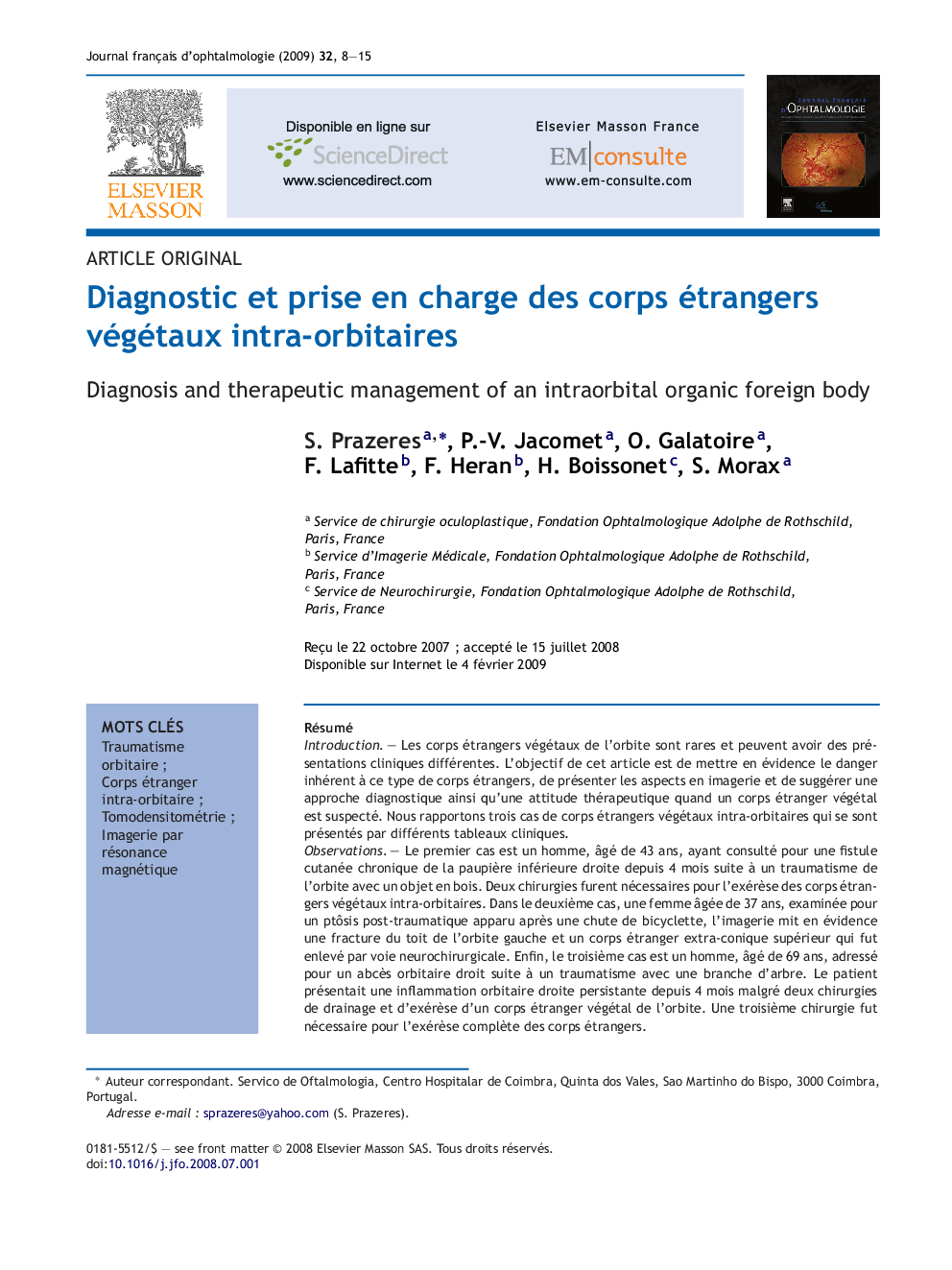| Article ID | Journal | Published Year | Pages | File Type |
|---|---|---|---|---|
| 4025213 | Journal Français d'Ophtalmologie | 2009 | 8 Pages |
Abstract
Detecting an orbital organic foreign body is sometimes difficult, especially when the clinical history is unclear, the ophthalmologic exam reveals no abnormalities, or if the patient is referred to the hospital several months after the traumatic event. Orbital organic foreign bodies can lead to potentially serious orbital or intracranial complications. Computed tomography and orbital ultrasound sometimes do not yield an evocative pattern: for instance, in computed tomography, the low density of wood can be misdiagnosed as air. On the other hand, these foreign bodies can persist in the orbit after several surgical explorations because they can easily break or migrate. Magnetic resonance imaging is useful when an orbital organic foreign body is suspected, but the analysis is easier when clinical data are suggestive.
Keywords
Related Topics
Health Sciences
Medicine and Dentistry
Ophthalmology
Authors
S. Prazeres, P.-V. Jacomet, O. Galatoire, F. Lafitte, F. Heran, H. Boissonet, S. Morax,
